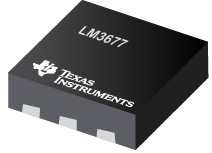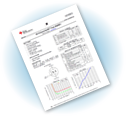Second rail container handling options launched

“Terminal operators want to reduce damage and improve efficiency when handling containers on the second rail,” said Mark Nailer, Industry Manager for Hyster Europe. “In close co-operation with terminal customers we have developed a ReachStacker with a raised cab and remote control for pedestrian operation of the boom and spreader.”
Handling from the second rail with a raised cab
The new hinged elevating operator cabin is an option on the Hyster RS46 ReachStacker which helps operators have direct visibility of the top corner pockets on the second rail containers, even when there is a high cube container on a railcar in the first rail position.
Previously, the use of cameras or staff, known as spotters, to direct the operator had their limitations, putting extra time on the operation and increasing the cost per container moved.
“The cab is raised and lowered smoothly on a hinged arm making it easy for the operator to see over a container, which improves productivity straight away,” Nailer added. “Both doors must be locked, and it can be raised while driving, although the speed is automatically reduced to 10Km/h.”
To handle a heavy load at extended load centre, a stabiliser can be deployed at the front of the ReachStacker. There is also an optional tilt of up to ten degrees on the cab which helps provide improved visibility when handling high stacks and makes this type of work more comfortable.
“The overall height of the ReachStacker when the cab is lowered is the same as the standard model, unlike competitor models that use a mast,” Nailer continued. "This helps prevent the rearwards view from being affected. Plus, it makes road transport easier and speeds up the commissioning of the truck.”
Maintenance costs are also kept low with features such as one single greasing point. In case the driver falls ill or if the truck breaks down there are also levers to manually lower the cabin both on the truck and in the cab itself.
Handling on the second rail with remote control
“Spotters are often used when handling on the 2nd rail, but they are no longer necessary,” explained Nailer. “We have also developed a remote control for the boom and spreader enabling the driver to position the container whilst on foot.”
First, the driver quickly gets the container in roughly the correct position over the railcar. After selecting the remote operation mode which immobilises the vehicle, the driver then leaves the ReachStacker.
“The driver gets into a safe position with good visibility of the railcar on the second rail and uses the remote control to move the boom and spreader,” Nailer said. “All relevant operational data can be seen on the remote control unit to position the container quickly and easily and means drivers can work independently without the need for a spotter.”
For standard first rail handling, Hyster Europe has a number of different ReachStacker options including intermodal ReachStackers with legs for swap-bodies. Hyster Europe also has many solutions for all types of other rail handling whether it is recycling, metal coils, metal slabs, steel pipes, paper rolls, timber or other break bulk.
Similar articles
More from Hyster
- Is the future of forklifts all electric? 18th December 2019
- Second rail container handling options launched 13th November 2019
- Specially engineered lift trucks refresh operations 31st October 2019
- Save moving costs with with Spacesaver lift trucks 9th October 2019



.jpg)







Write a comment
No comments